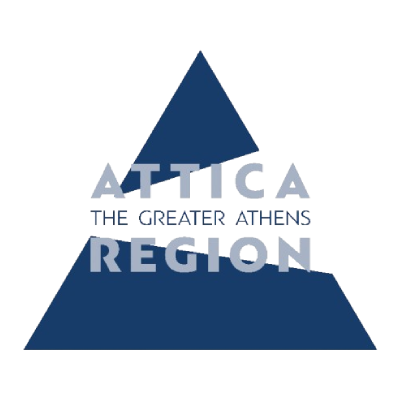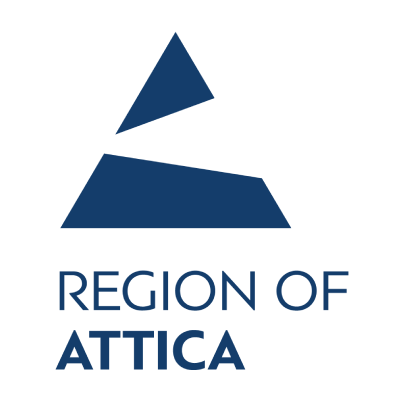The marathon race has its origins in the epic Battle of Marathon, which took place in 490 BC. At the battle’s conclusion, Pheidippides, the heroic soldier and messenger, is said to have run 42,195 metres non-stop from the battlefield to Athens with news of the victory. Upon his arrival he declared his famous last words, “we won”, and promptly died. The legend showcases the greatness of human will, and led to the creation of an event like no other, one that inspires athletes the world over to this day.
The concept of the marathon race as a sporting event is credited to the French philologist Michel Bréal, a friend of the French educator and historian who founded the International Olympic Committee and became the father of the modern Olympic Games, Pierre de Coubertin.
Bréal’s suggestion was to organize a race where athletes would cover the same distance as the brave Pheidippides during the revival of the 1896 Olympic Games in Athens. So began the modern marathon race, on March 10th 1896, in the qualifying races that determined which six athletes would represent Greece in the first modern Olympic Games.
Athens Marathon. The Authentic
Every year, the second Sunday of November, Athens – the birthplace of the marathon race –becomes the centre of international attention and welcomes runners of all ages from all over the world, who wish to participate in its annual authentic Marathon.
The race starts at the Tomb of Marathon and finishes at the Panathenaic Stadium, also known as the Kallimarmaro, in downtown Athens. In addition to the traditional marathon runners, thousands of athletes compete in 5 and 10-kilometre races, as well as in children’s races and the Special Olympics race.
2014 was a landmark year for the Athens Marathon, since the organisers re-named the event to “Athens Marathon. The Authentic.” The purpose of this change was to highlight the uniqueness of the historical route and the historical background of the race. In addition, the logo of the event changed, creatively reflecting the notion of the new name.
The Athens Authentic Marathon is an epic athletic event that unites past with present, reminding us of the timeless values that bring together people and nations throughout the world!
The Battle of Marathon
Considered by many historians as one of the most significant battles in history. The victory of the Greeks against the Persians in the 490 BC Battle of Marathon profoundly affected the course of Greek history, leading to the rise of classical Hellenism throughout the European continent, and forming the foundation of what we now call Western Civilization.
After the Greeks of Asia Minor joined with the Athenians and Eretrians to revolt against the Persians in the failed Ionian Revolution, the Persian King Darius decided to exploit Greece’s weakness and destroy Athens and Eretria. In 490 BC, Darius sent a massive marine military force, led by Datis and Artaphernes, to conquer first the Cyclades and then both cities.
Eretria was quickly destroyed, and the Persian army began making its way through the Marathon plain towards Athens. There, 10,000 Athenian soldiers united with 1,000 soldiers from Plataies. Though Spartan troops had also volunteered to help, their arrival was delayed by a religious holiday, during which no military operation was allowed. The number of the Persian soldiers was overwhelming. According to Herodotus, there were 200,000 foot soldiers, while modern historians place the number closer to 100,000.
For five days, the armies avoided battle. Ten Generals, shared charge of the Athenian army, rotating daily. On the sixth day, the general Miltiades decided to attack after the sudden retreat of the Persian army. He arranged a battalion with a weaker core, surrounded by a reinforced outer section. While the core engaged the attacking Persians, soldiers from the outer section surrounded the unsuspecting Persians and swiftly defeated them. The Persians lost more than 6,000 soldiers that day, while the Plataeans lost 11 and the Athenians 192. Those lost were honoured in a tribute with human figures on the Parthenon, when it was created.
The Battle of Marathon marked the first substantial victory of the Greeks over the Persians, and gave them confidence, proving that the Asian power was not invincible.
After the debacle, ships carrying the Persian cavalry headed to Piraeus to conquer Athens, which had been left defenceless. However, they met with surprise when they got to the site. The Athenians, though fatigued from the battle and carrying heavy weapons, had arrived in Athens first, ready to defend their city. When the Persians arrived at Piraeus and saw the Athenians, shields sparkling in the sunlight, they admitted defeat and returned to their homeland ashamed.
The idea for today’s marathon race comes directly from the Battle of Marathon. According to historians, news of the Greek victory was brought 42,195 metres from Marathon to Athens by the soldier Pheidippides. A renowned runner at the time, Pheidippides arrived at the House of Assembly, proclaimed victory, and then died.
The Ancient Marathon Runner
Athletic events were a tradition in ancient times, usually accompanying religious celebrations. Information about athletes’ preparation was first found in the Homeric Epics, but systematic training was not established until after the Olympic Games began in the 8th century BC.
Stamina, proper nutrition and structured training, were the basic parameters set for achieving optimal athletic performance. These topics were studied by doctors, philosophers, writers and even legislators like Solon. With the goal of reaching the best possible physical condition, Greeks gathered information from the fields of sports medicine, physiology and nutrition to establish a core set of rules for proper training.
Athletes and trainers alike sought to achieve the best possible performance, always through fair play. So athletes who followed the proper preparation, training and diet were undoubtedly most likely to be victorious, the highest honour for an athlete and his birthplace.
Training consisted of three parts. First, a warm up with light exercises, specific motions and rubbing helped prepare the muscles and joints for training. Second, the main routine trained the muscles and strengthened the athlete’s endurance, helping him improve performance. Exercises varied depending on the sport, and were determined by designated trainers. Third, during rehabilitation, which was considered of paramount importance, athletes went through breathing and relaxation exercises to ease the muscles and rest the body. Trainers also emphasized the importance of relaxing between training sessions and encouraged athletes to sunbathe.
Marathon runners had to remain intensely focused throughout their training. This meant following a very systematic training plan, exercising abstinence and maintaining a low profile. The main objective was not only to cover this massive distance, but to stand out while doing it.
Food for Fuel
Without a doubt, food is the fuel needed for a body to function properly. So athletes had to maintain a healthy diet, consuming specific foods to improve their stamina and achieve maximum potential. An athlete’s diet was also specially designed to help protect them from lesions, ensure a quicker healing process after injury, and contribute to high morale and an optimistic outlook.
In Ancient Greece, writers documented how experts were responsible for athletes’ everyday diet, designing a special combination of nutrients based on the athlete’s build and event. Athletes tried to improve their performance by consuming meat of various kinds or stock of blood before each race. During the 3rd-century BC Olympic Games, athletes ate mushrooms to increase their dynamics and chefs prepared special bread with analgesic properties for them.
The doctors of ancient times were particularly important in preparing athletes for competition, since they selected the diet an athlete should follow. Around the 1st century AC, athletes preparing to cover long distances, like marathon runners, drank a unique beverage made of Greek herbs to improve their stamina and endurance.
Today, it is widely known that proteins and carbs provide the body with the calories it needs to generate energy, enhance endurance and build strength. For this reason, athletes often include foods such as lean beef, bananas, cereals, eggs, yoghurt, raisins, sweet potatoes, almonds, salmon, green vegetables, etc. in their diets. Equally important is the consumption of fluids for the proper hydration of the body.
The Role of the Runner in Ancient Greece
In ancient times, during expeditions, marches, or battles every unit was necessarily accompanied by a messenger, a skilled runner responsible for transferring the news of victory or defeat to the homeland and communicating with the outside world.
At that time, there was no organized postal system, most roads were inaccessible and dangerous, and the land between the sender and the recipient was often occupied by enemies. This made communication even harder, and even more important.
Each unit’s specially-trained messenger travelled by foot as horses would have been too easily spotted by the enemy, carrying on their person messages related to war and peace.
According to ancient writers, the messengers were always armed and wore heavy armour. This not only protected the messengers, but was worn as a legal and moral imperative. Messengers running without their weapons after the battle would be considered deserters by the rulers of the state. Messengers were expected to cover distances of many kilometres, usually under adverse conditions with minimal time. Their goal was sacred: to convey the message at all costs.
Considering the fact that messengers ran for hundreds of kilometres on rugged roads, tired from the battle, wearing heavy armour and under enormous stress, we can easily understand why it was common for them to die immediately after conveying the message, as in the case of Pheidippides.
In addition to messengers, there were also daytime guards, whose role was to survey the area from strategic spots at high altitudes and inform generals or rulers of any suspicious or hostile moves.
In commemoration of the messenger Pheidippides’ heroic achievement of bringing the message of victory from Marathon to Athens in 490 BC, Michel Bréal suggested adding the race as an event in the Olympic Games. Bréal, who was friends with Pierre de Coubertin, founder of the Olympic Games, was able to ensure the introduction of the marathon race to the Olympic calendar in 1896. Now one of the world’s most awe-inspiring athletic events, this 42,195-metre race showcases the greatness of human will and unites millions of people from across the globe.
For more information, please visit: www.athensauthenticmarathon.gr


